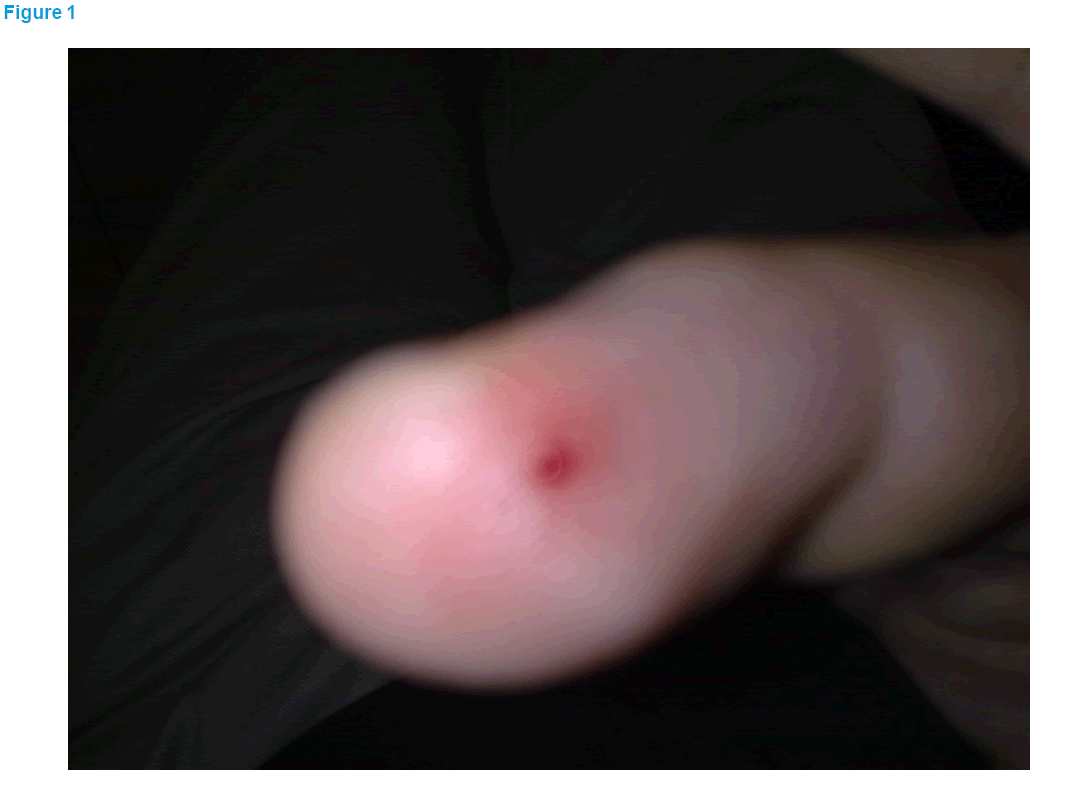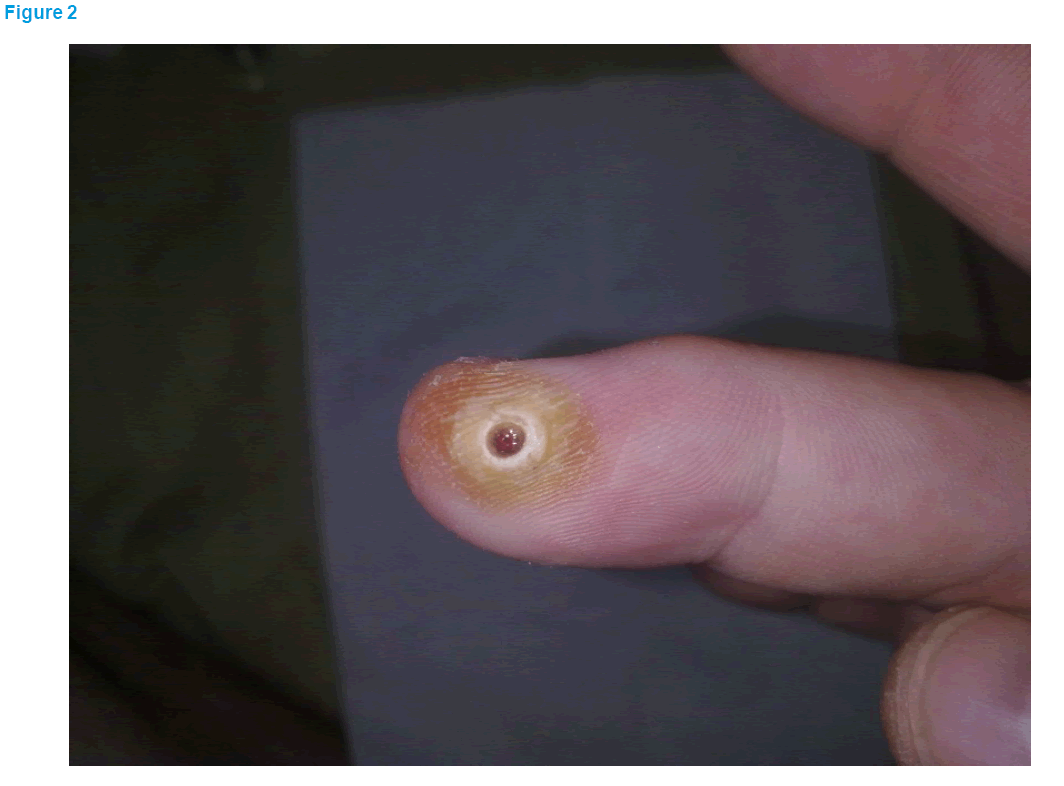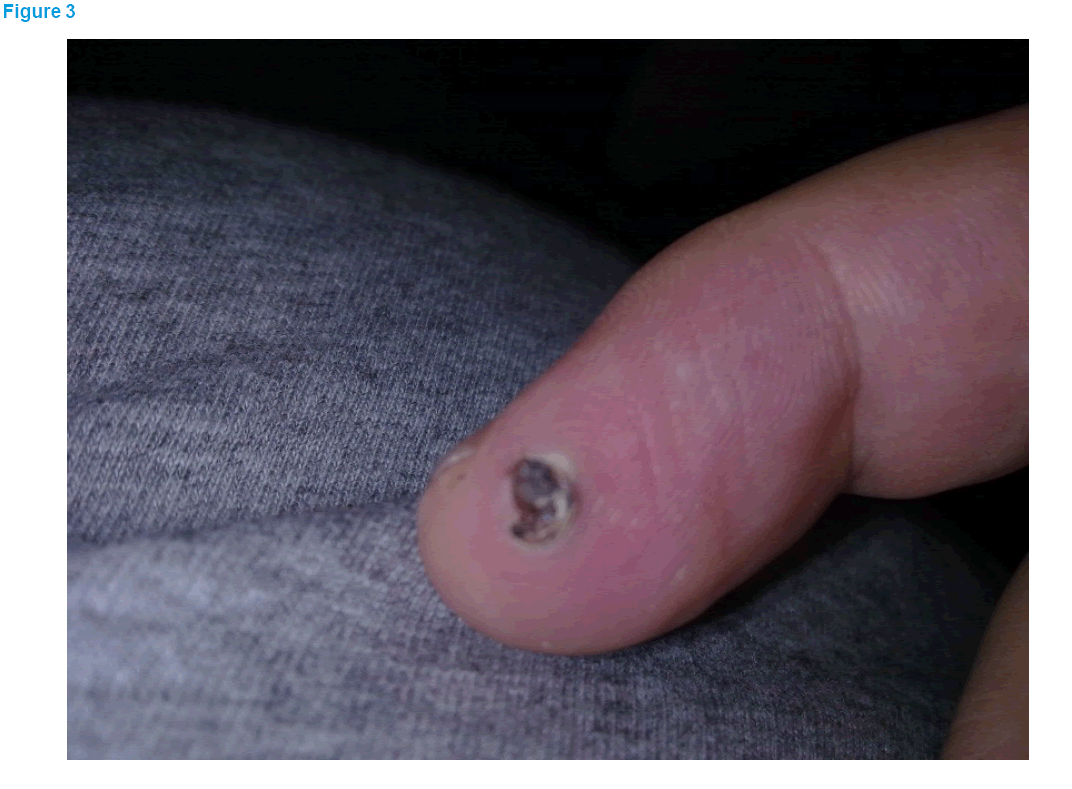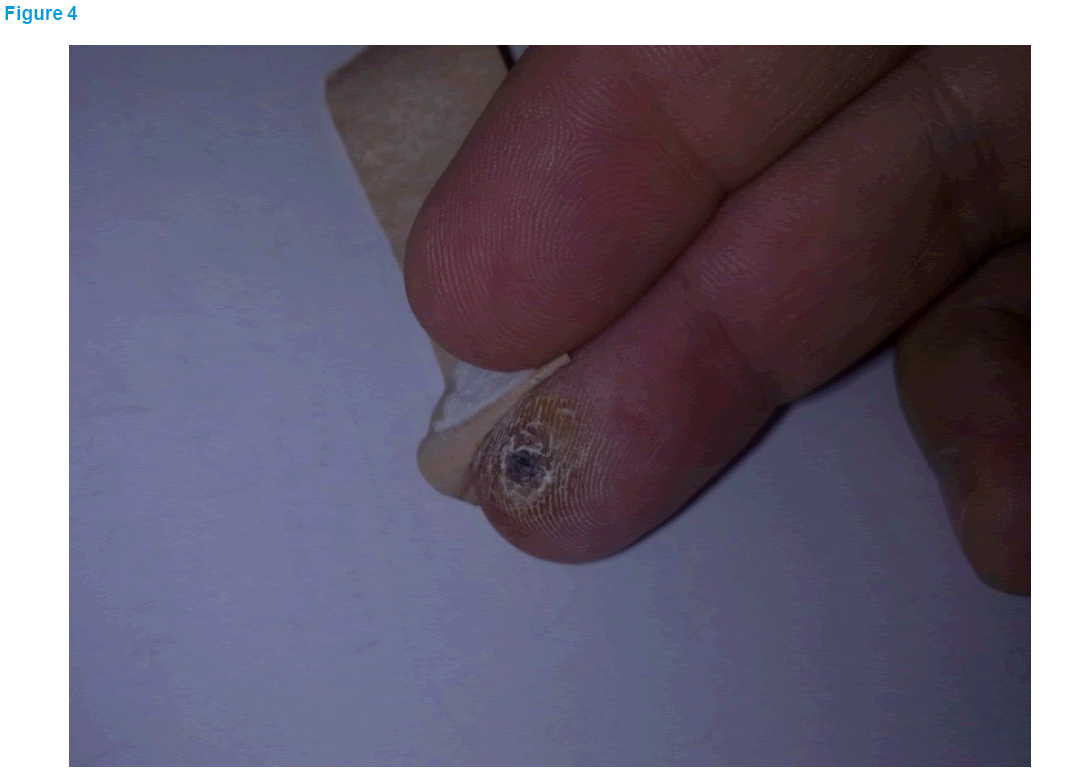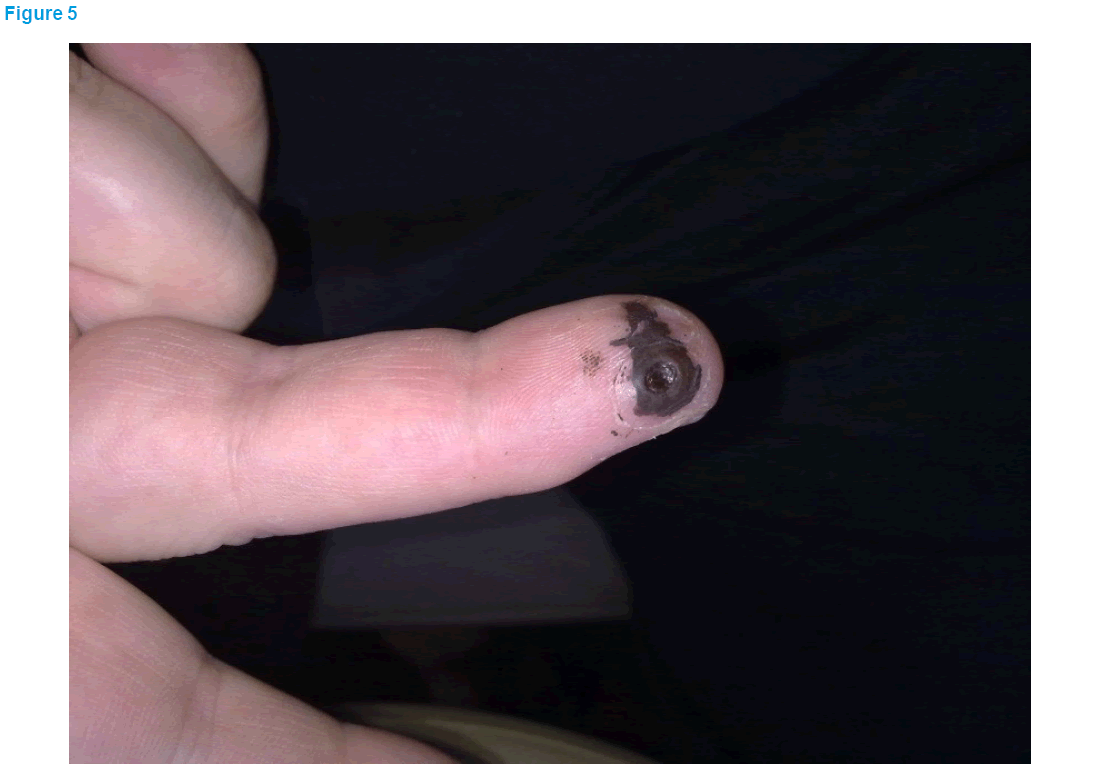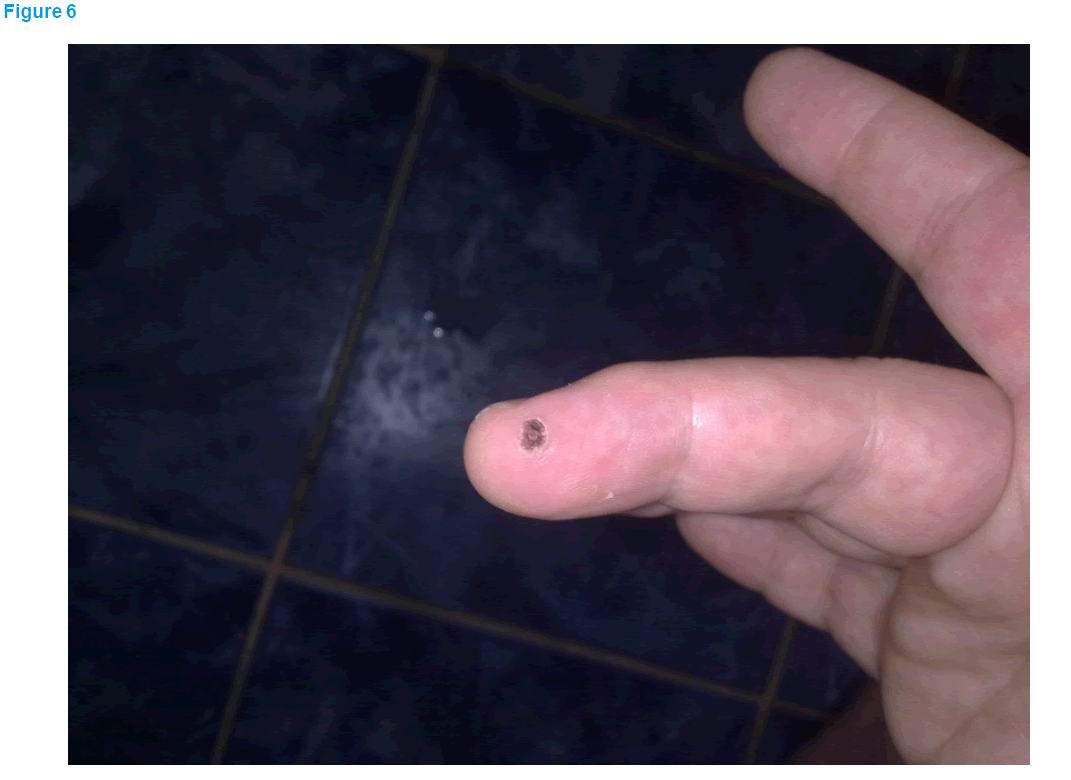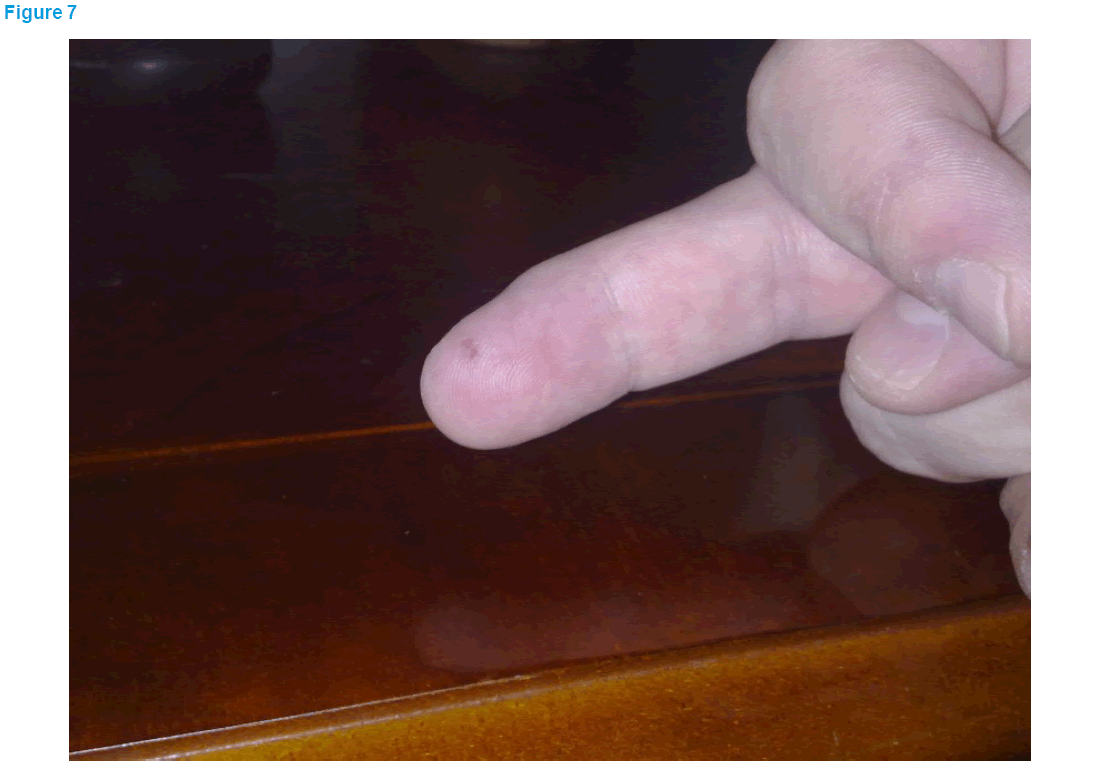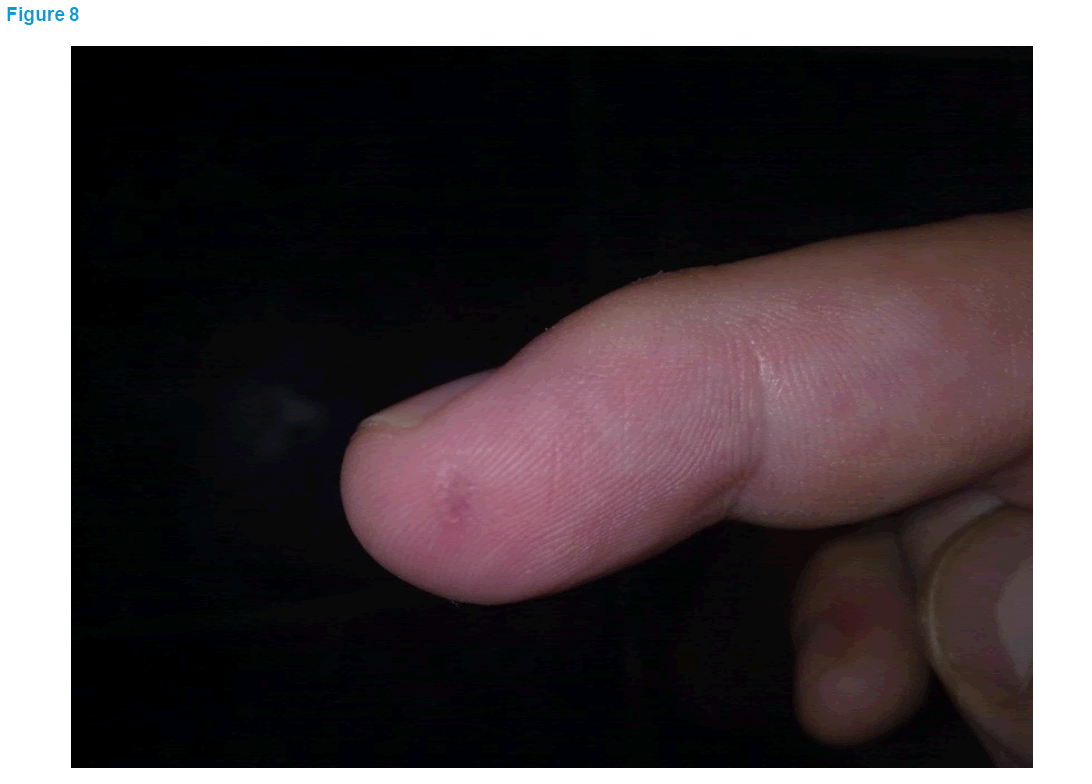Pyogenic granuloma successfully treated with electric cautarization — case study
- *Corresponding Author:
- Muaed Jamal Alomar
Clinical Pharmacy Department, Faculty of Pharmacy and Health Sciences, Ajman University of Science and Technology Network, Fujairah, UAE.
E-mail: muayyad74@yahoo.com
Date of Received :28-10-2011
Date of Accepted :30-01-2012
Available Online :15-02-2012
Abstract
M.O is a 37 years old man complaining of a sudden small growth with continuous bleeding on his fi nger, erythematous, painless papule lesion (fi gure1). Th e lesion was very small in size, fi rm and shiny when fi rst noticed by the patient. No history of trauma or accident in that area. It was tender to touch with a tendency to bleed more if touched. Th e patient tried topical antibiotics for one month before he went to seek medical assistance (fi gure2). When the bleeding couldn’t be controlled by antibiotics, he went to a GP for a general checkup. Th e GP diagnosed the bleeding as a superfi cial infection and pescribed oral cefi xime 400 mg once daily for 7 days plus topical fucidic acid ointment twice daily for one month (fi gure3). Figure 3 shows there was no improvement after the antibiotic course. A dermatologist was seen after that and diagnosed it as a pyogenic granuloma. A second opinion from another dermatologist was taken to confi rm the diagnoses. Th e dermatologists decided that there was no need for biopsy at the moment because of the small area of bleeding.
KeyWords
Granuloma, cauterization, silver nitrate, papule.
Patient Data
M.O is a 37 years old man complaining of a sudden small growth with continuous bleeding on his finger, erythematous, painless papule lesion (figure1). The lesion was very small in size, firm and shiny when first noticed by the patient. No history of trauma or accident in that area. It was tender to touch with a tendency to bleed more if touched. The patient tried topical antibiotics for one month before he went to seek medical assistance (figure2). When the bleeding couldn’t be controlled by antibiotics, he went to a GP for a general checkup. The GP diagnosed the bleeding as a superficial infection and pescribed oral cefixime 400 mg once daily for 7 days plus topical fucidic acid ointment twice daily for one month (figure3). Figure 3 shows there was no improvement after the antibiotic course. A dermatologist was seen after that and diagnosed it as a pyogenic granuloma. A second opinion from another dermatologist was taken to confirm the diagnoses. The dermatologists decided that there was no need for biopsy at the moment because of the small area of bleeding.
Treatment
The treatment was done in three stages;
1. Topical application of salicylic acid (twice daily) in order to burn the affected area. The treatment was continued for one month. Figure 4 shows the results of that particular treatment. The results were not successful and bleeding continued.
2. Burning the area with silver nitrate rods; once every other day for two weeks. Figure 5 shows the results of that particular treatment. The results were partially successful. The bleeding continued but the quantity decreased. The problem with this treatment was the burning sensation and the severe excruciating pain accompanied with the application of silver nitrate. The pain continued for hours after the application.
3. Cauterization; the area was locally anaesthetized and cauterized electrically. A course of antibiotics (amoxycilline with clavulinic acid) was given after the procedure in order to prevent any complications. The procedure took 15 minutes. After one week of the procedure, bleeding stopped, but a fluid discharge continued (figure6). Three weeks later the discharge stopped completely and the injury started to heal (figure 7). Another 2 weeks later the healing was complete and bleeding had stopped (figure 8).
Discussion
Pyogenic granuloma is a benign vascular erosion of the skin and mucosal areas with unidentified etiology [1]. It is also referred to as lobular capillary hemangioma. It consists of a group of blood vessels arranged in a lobular form. It might occur at any age but it is more common in children and young people with an increased prevalence among females. It was originally considered the tumor of pregnancy [2]. Pyogenic granuloma presentation includes sudden growth of a vascular tissue over several weeks or months [2]. Increasing levels of pregnancy hormones might be the reason for its prevalence [3]. It has been suggested that estrogen hormone plays a major role in the development of granuloma gravidarum [11].
In the past it was thought to be a result of a bacterial infection where antibiotics had failed to heal the lesion. In another case study it was shown that antibiotics also failed to induce any improvement [6].
Treatment of pyogenic granuloma includes cryosurgery, curettage, electrodesiccation, chemical cauterization, and laser surgery [4]. Silver nitrate cauterization in the office setting can treat simple cases of pyogenic granuloma [5,7]. In this case the response to silver nitrate alone was not enough to eradicate the lesion. Even though it helped in reducing the lesion and increasing the healing process when electrical cauterization procedure implemented. In a case study of an 82 year old man with pyogenic granuloma, cauterization with imiquimod 5% cream showed successful healing with no recurrence after 8 months of follow up [8]. Another study also supports the use of imiquimod 5% cream especially in children with promising results and no recurrence [9]. Laser therapy can also be used to cauterize the lesion with good therapeutic outcomes [10]. Laser therapy requires a skilled medical professional with good practical experience. It also requires multiple sessions to achieve complete healing.
For this patient, electric cauterization has shown a successful and complete healing. It also left a minor scar which may disappear with time. It was a one session treatment, painless due to the use of local anesthetic. It is also fast, more economic and less invasive.
References
- Rapini, RP, Bolognia JL, Jorizzo JL. Dermatology. 2-Volume Set. 2007; St. Louis: Mosby.
- Daley TD, Nartey NO, Wysocki GP. Pregnancy tumor: an analysis. Oral Surg Oral Med Oral Pathol. 1991: 72:196-199.
- Ramirez. K, Bruce G. carpenter. Pyogenic granuloma: case report in a 9-year- old girl. General Dentistry. 2002: 50:280–1.
- Matsumoto K, Nakanishi H, Seike T. Treatment of pyogenic granuloma with a sclerosing agent. Dermatol Surg. 2001: 27(6): 521-3.
- Quitkin HM, Rosenwasser MP, Strauch RJ. The efficacy of silver nitrate cauteriza- tion for pyogenic granuloma of the hand. J Hand Surg Am. 2003: 28(3): 435-8.
- Leight, A. A non-healing ulcerated fingertip following injury. J Fam Pract. 2006: 55(3): 225-9.
- Dollery, W. Towards evidence based emergency medicine: best BETs from the Manchester Royal Infirmary. Curettage or silver nitrate for pyogenic granulo- mas on the hand. J Accid Emerg Med. 1999: 16(2): 140-1.
- Georgiou S, Monastirli A, Pasmatzi E, Tsambaos D. Pyogenic granuloma: Complete remission under occlusive imiquimod 5% cream. Clinical and Experimental Dermatology. 2008;33 (4): 454-456.
- Kim SH, Yoon MS, Kim DH. The therapeutic effect of 5% imiquimod cream on pyogenic granuloma. Korean Journal of Dermatology. 2006;44 (9): 1078- 1083.
- Galeckas KJ, Uebelhoer NS. Successful treatment of pyogenic granuloma using a 1,064-nm laser followed by glycerin sclerotherapy. Dermatologic Surgery. 2009;35 (3): 530-534.
- Demir Y, Demir S, Aktepe F. Cutaneous lobular capillary hemangioma. induced by pregnancy. J Cutan Pathol. 2004;31: 77-80.


